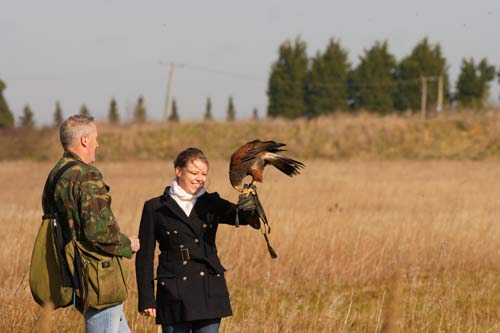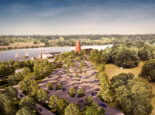Come Fly With Me
Come Fly With Me 1 2
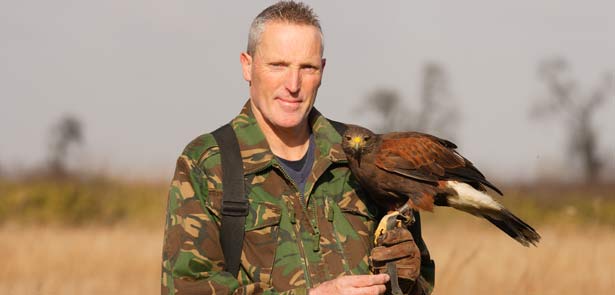
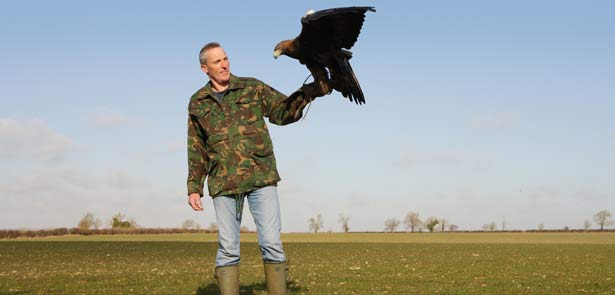
At 4,000 years old, the art of falconry is one of the oldest sports known to man. Birds of prey, or “raptors”, have worked alongside humans for millennia to hunt for food, a tradition that is still thriving today. In the UK, falconry is pursued mainly for enjoyment by a small group of passionate individuals. You will likely have seen these modern day falconers at summer fairs or outdoor exhibitions. In fact, you may well have seen Simon Tebbutt...
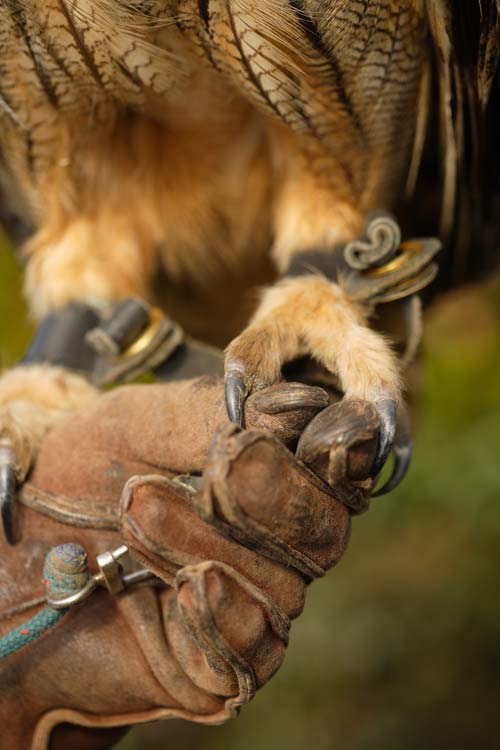 Perched majestically on the gauntleted arm of Simon Tebbutt is one of nature’s most adept killing machines – Tarim, a beautiful ten-year-old Golden Eagle. Descended from dinosaurs, Golden Eagles are quite literally “raptors” of the sky with muscular talons that slice through their prey and binocular vision eight-times sharper than that of a human. They have evolved into lethal hunters that dominate the food chain, and the spectacular creatures have even been known to attack fully- grown bears in defence of their young. With a giant wingspan of over two metres and weighing around 8lbs, Tarim is a particularly brawny specimen. He seems happy to be stroked, but the glint in his fierce golden eyes is a reminder of the innate wildness. Even his Kazakh name alludes to the existing practice in Kazakhstan of natives on horse-back harnessing the eagles hunting prowess to catch animals as large as wolves. Having dedicated his life to falconry, Simon has mastered the art of taming these wild beasts, and now makes a living as a modern day falconer. In addition to Tarim, Simon keeps 13 birds of prey including Goshawks, Eagle Owls, Harrow Hawks and even little Lucky the Barn Owl.
Perched majestically on the gauntleted arm of Simon Tebbutt is one of nature’s most adept killing machines – Tarim, a beautiful ten-year-old Golden Eagle. Descended from dinosaurs, Golden Eagles are quite literally “raptors” of the sky with muscular talons that slice through their prey and binocular vision eight-times sharper than that of a human. They have evolved into lethal hunters that dominate the food chain, and the spectacular creatures have even been known to attack fully- grown bears in defence of their young. With a giant wingspan of over two metres and weighing around 8lbs, Tarim is a particularly brawny specimen. He seems happy to be stroked, but the glint in his fierce golden eyes is a reminder of the innate wildness. Even his Kazakh name alludes to the existing practice in Kazakhstan of natives on horse-back harnessing the eagles hunting prowess to catch animals as large as wolves. Having dedicated his life to falconry, Simon has mastered the art of taming these wild beasts, and now makes a living as a modern day falconer. In addition to Tarim, Simon keeps 13 birds of prey including Goshawks, Eagle Owls, Harrow Hawks and even little Lucky the Barn Owl.
The most rewarding feeling is being able to take a wild bird, fly it free and have it come back to you”, Simon reveals. “You need to understand the birds and get inside their head, and have an affinity with nature. It’s natural hunting and that’s what the bird wants to do. And it’s gone on for thousands of years. We’ve hunted together since 2000BC
Simon’s passion for the ancient art is obvious. The fact that he hasn’t had a day off in over twenty years is perhaps one indication of how deep rooted his commitment to falconry is – (a fascination that began after seeing the film Kes as a child!) For Simon, falconry isn’t a job; it’s “a way of life – a bit like a farmer.”
Given Simon’s gruelling daily routine, it’s easy to see why he draws this comparison. A typical day involves cleaning out each of the specially designed sheltered cages (or “mews”), feeding them on a diet of raw quail, rabbit and other game to a tune of £100 a month, plus flying them daily for exercise.
One of the most important parts of Simon’s daily routine is to weigh the birds in order to maintain the optimum hunting weight. This is actually one of the most crucial elements of falconry as if the bird is too full, it won’t fly in the field. In fact the common phrase “fed-up” actually originated from this particular issue. Getting this delicate balance right takes a long time to learn. The first step is to find the birds flying weight, which Simon admits is quite an entailed process in itself. “There’s lots of information that you need to know, like understanding that muscle weighs more than fat. Then you have to weigh them every day, and adjust their food intake accordingly, so it’s not something you could do straight away.”
Simon estimates that it would take at least six months for a beginner to train a bird to fly back without fear of losing it, with Harris Hawks generally considered to be the easiest birds to train. So it’s no small commitment to undertake, and inevitably entails a certain amount of trial and error.
You have to have lots of patience. There’s no love there. They get to know you as a food provider and that’s all. A dog would come back for a cuddle or a pat, not the birds. If you get it wrong and the bird sits up in the tree then it’s your own fault basically, you’ve not done your job right
And has this ever happened to Simon during one of his events? 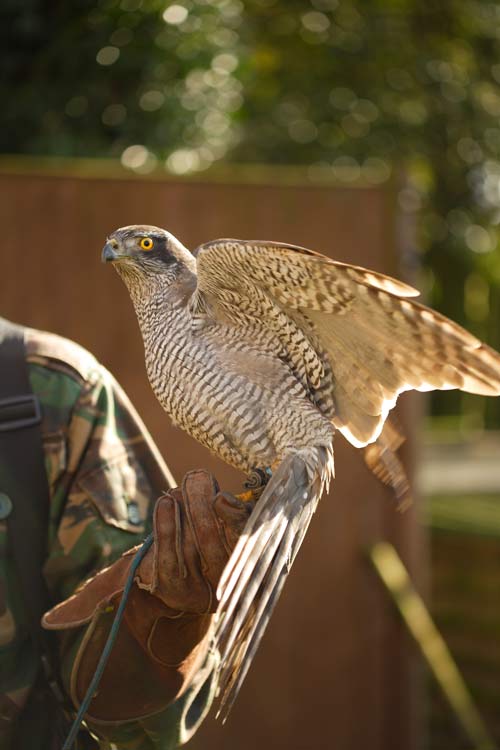
“Oh crikey when I first started, yes! I remember being sat for two hours under a tree waiting for it to get hungry and come back down!” But luckily Simon took this early faux pas in front of a crowd of people with good humour. “Well it’s like anything, the public love it if goes wrong don’t they! They always remember the one that cleared off!”
Events and demonstrations form part of Simon’s work, mainly during the summer months when there are outdoor fairs and shows. He also hosts experience days for the public and corporate sector, where individuals get to enjoy the raw beauty of one of nature’s most efficient predators in action.
People get to handle some different birds and learn a little bit about falconry. They get to fly some hawks and some owls and then in the afternoon we actually go out with a Harris Hawk, work a dog along the hedges and if any rabbits run out we have a go at them with the bird. So they get to see a bird actually working. It’s not something people can normally do, and there’s something special about people being able to get closer to nature. I think that’s what people enjoy most about it – going back to nature
Come Fly With Me 1 2



